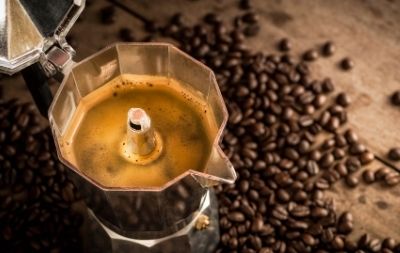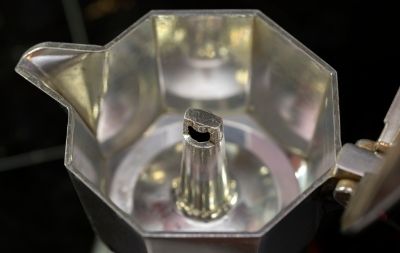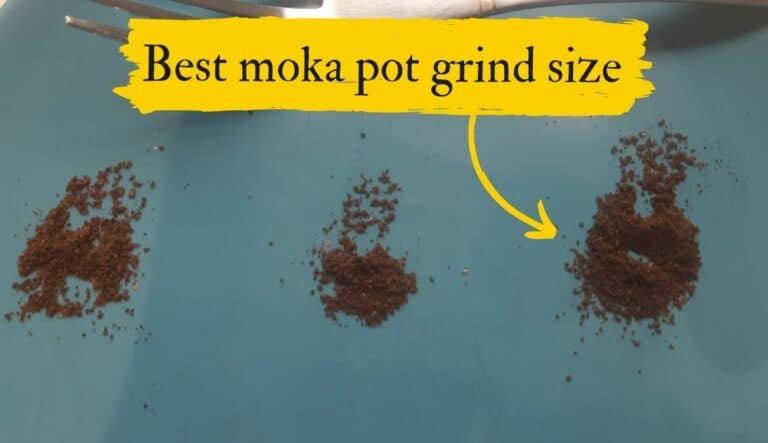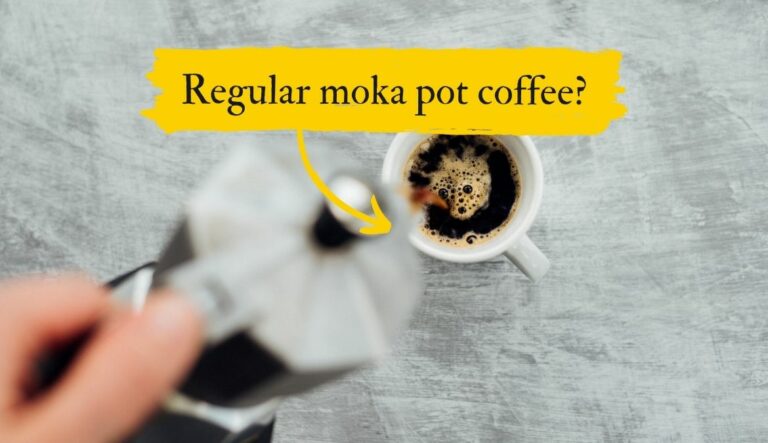Moka pot coffee has about 200% more caffeine than normal coffee and about 30% as much caffeine as espresso per volume. However, each of these three coffee types are consumed in different volumes. 200ml of moka pot coffee ends up having more caffeine than the most common coffee and espresso sizes.
There are a few important things to consider when looking at the strength of moka pot coffee, including the roast type and your definition of strong coffee. Let’s take a look at why that is:
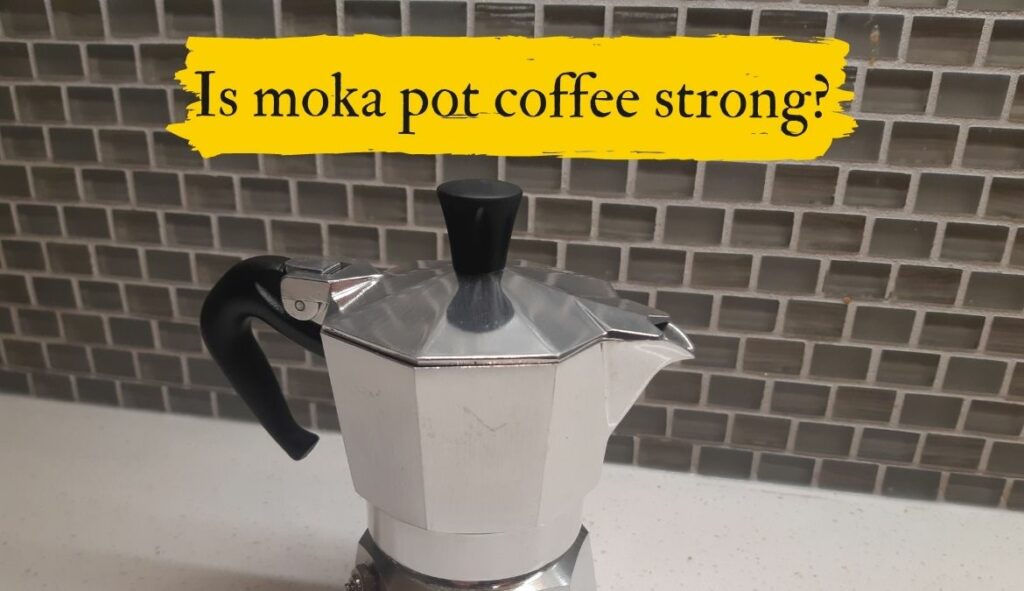
How do you measure moka pot coffee strength?
Caffeine content is the most common measure of coffee strength. But some people may interpret coffee strength based on how potent the aroma and taste are.
Both definitions are perfectly acceptable. But it’s important to consider what type of strength you are seeking in order to brew a stronger or weaker moka pot coffee.
Is moka pot coffee stronger than regular coffee?
Moka pot coffee has about twice as much caffeine as regular coffee. A 300ml cup of moka pot coffee will have about 516mg of caffeine while normal coffee will contain about 240mg. The aroma and taste of moka pot coffee is perceived as being stronger as well due to its pressurized brewing method.
Moka pot coffee is brewed under steam pressure, which is slightly higher pressure than standard atmospheric pressure. This causes the coffee to have a richer, more concentrated, and fuller bodied taste which some people describe as being stronger.
Moka pot coffee is brewed with a 1:7 coffee-to-water ratio compared to a 1:15 ratio with pour over coffee. This means there are more organic compounds per volume of water being dissolved, including caffeine.
Is moka pot coffee as strong as espresso?
Moka pot coffee has a lower concentration of caffeine and typically has a weaker taste compared to espresso. Espresso tastes stronger because it produces a richer, fuller bodied coffee and often uses a slightly darker roast.
However, as you can see from the table below, you will often ingest more caffeine from moka pot coffee because it’s usually prepared in larger volumes.
Does moka pot coffee have more caffeine?
By volume, moka pot coffee has more caffeine than pour over coffee but less caffeine than espresso coffee. But the volume in which these beverages are made will determine the total amount of caffeine a coffee drinker ingests.
Here’s the thing:
Caffeine is very soluble and will quickly dissolve into your coffee as it’s being prepared. This means that the brewing method doesn’t really determine how much caffeine is extracted – the amount of coffee being used does.
There is approximately 12 milligrams of caffeine per gram of ground arabica coffee. Robusta coffee is about 23 milligrams of caffeine per gram of ground coffee. Regardless of your prefered brewing method, you can reasonable estimate your caffeine content based on how much coffee is being brewed.
Most coffee is made with 100% arabica beans, so it’s reasonable to simply multiply the weight of your coffee in grams by 12 to get the total caffeine content in milligrams.
For example, 10g of coffee (multiplied by 12mg of caffeine) gives us about 120mg of caffeine.
However, some espresso coffee contain a small amount of robusta in the blend as well. This is especially common in Italy. So the caffeine content varies depending on the coffee you buy.
The table below shows the estimated amount of caffeine in moka pot, espresso and pour over coffee based on a 12mg of caffeine per gram of coffee ratio. It’s also assuming that the moka pot coffee is brewed with a 1:7 ratio, the espresso is brewed with a 1:3 ratio and the pour over with a 1:15 ratio.
| Coffee size | Moka pot caffeine | Espresso caffeine | Pour over caffeine |
|---|---|---|---|
| 30ml | 48mg | 120mg | 24mg |
| 60ml | 96mg | 240mg | 48mg |
| 200ml | 336mg | 800mg | 156mg |
| 300ml | 516mg | 1,200mg | 240mg |
| 550ml | 936mg | 2,200mg | 444mg |
| 750ml | 1,284mg | 3,000mg | 600mg |
As you can see, espresso contains a much higher concentration of caffeine by volume. However, most people only drink a single shot (30g) or double shot (60g) per day, which limits their caffeine consumption to about 240mg.
Remember that some espresso blends contain a percentage of robusta beans, which have a much higher caffeine content than arabica. So this number will vary.
With pour over coffee, a standard 300ml cup would already match a similar caffeine content to our espresso drinker. We usually prepare a 330ml serving of pour over in a standard coffee mug size.
Moka pot coffee is prepared in a variety of sizes. Oftentimes people will prepare a slightly smaller serving of moka pot coffee – perhaps a 200ml serving. This already reaches a 336mg caffeine content, which demonstrates how moka pot coffee is often much stronger in terms of caffeine content.
What’s the difference between a moka pot and espresso?
Moka pot coffee is prepared under about 1.5-2 bars of pressure while espresso is brewed under 9 bars of pressure. The higher pressure produces a richer tasting coffee that has a fuller body and a layer of crema on top.
Both coffee making methods have different coffee-to-water ratios as well. Moka pot coffee uses a 1:7 ratio while espresso uses a 1:3 ratio. In order for these different coffee ratios to brew tasty coffee without bitter flavors, they need to have different grind sizes and brewing durations.
Espresso coffee must have a finer ground with a larger surface area so the organic coffee compounds can dissolve more quickly during the quick espresso shot brew. Moka pot coffee has a slightly more coarse grind size to accomodate for the slower brewing duration.

